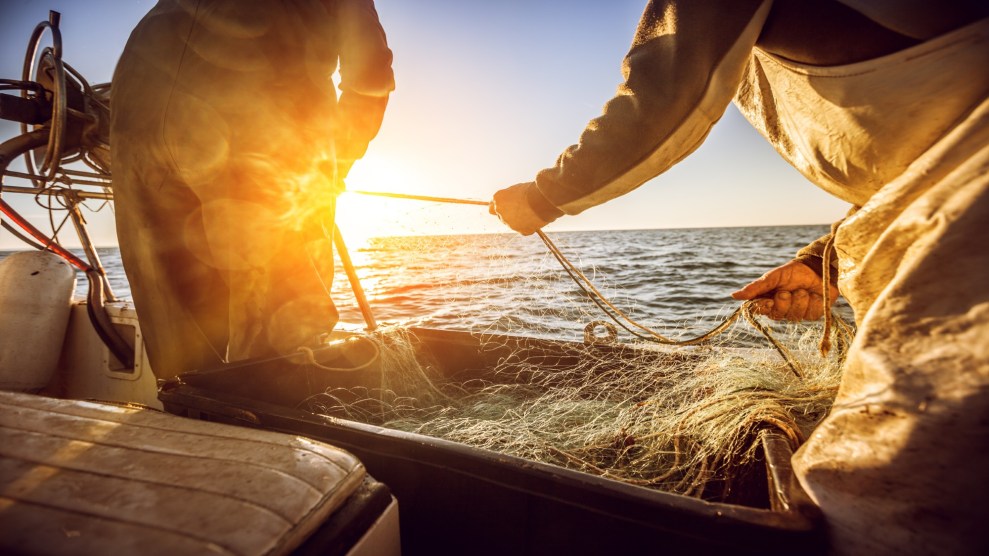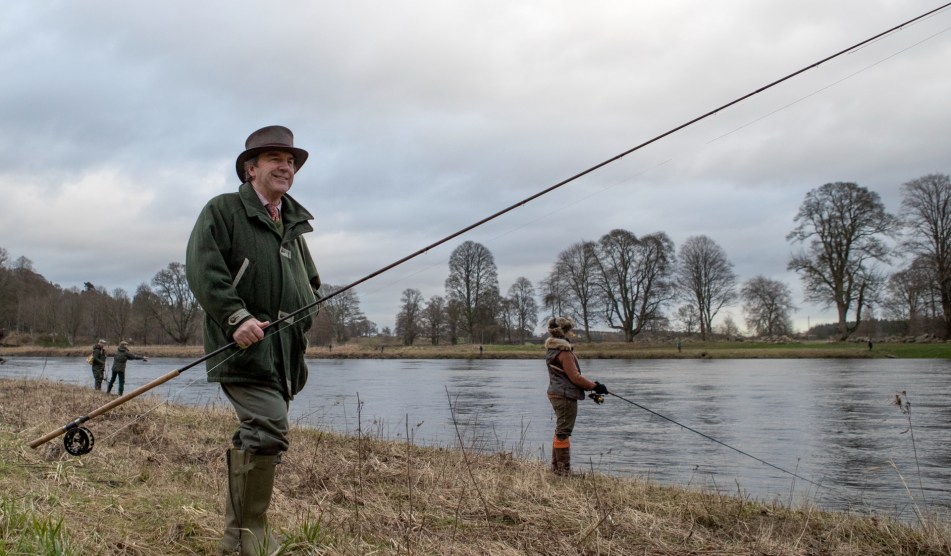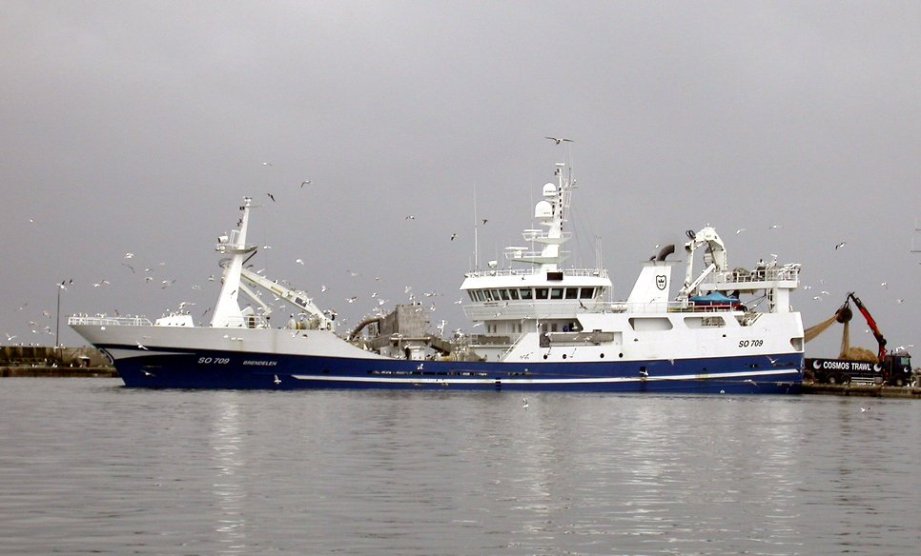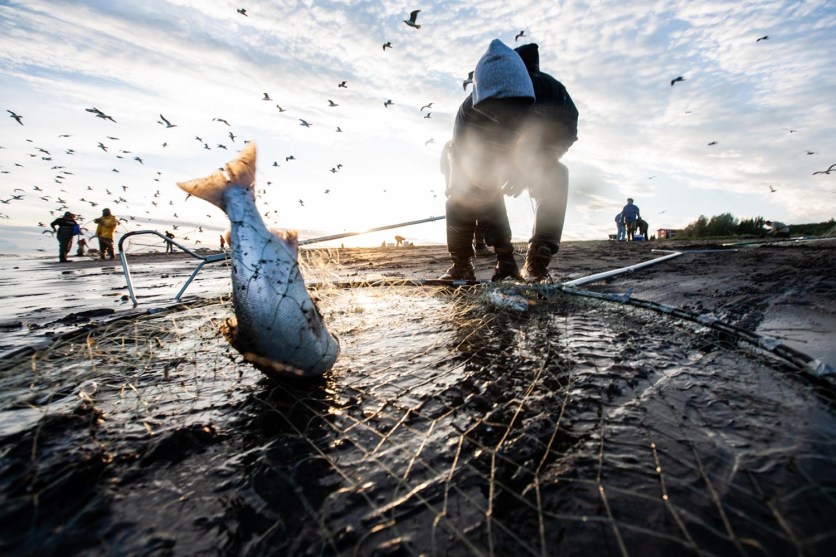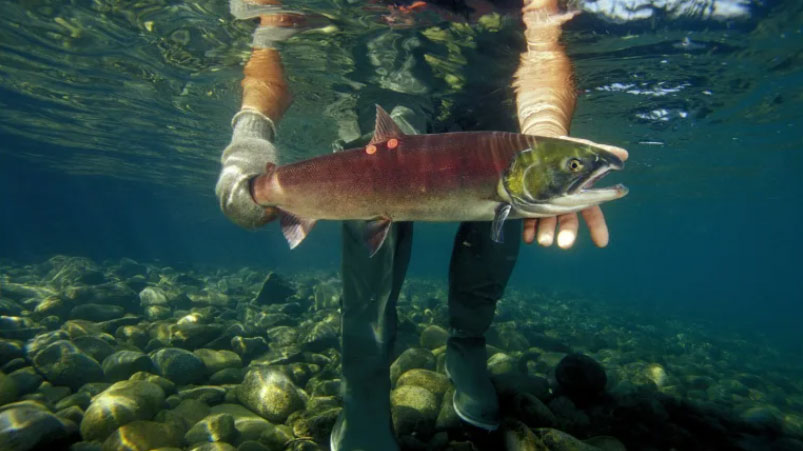
A sockeye (red salmon, Oncorhynchus nerka) in British Columbia's Horsefly River.Mark Conlin/VW PICS/UIG/Getty
This story was originally published by Canada’s National Observer and is reproduced here as part of the Climate Desk collaboration.
American fishing boats catching threatened Canadian salmon was flagged as a top concern for federal Fisheries Minister Joyce Murray before meeting with the US ambassador to Canada in March.
Briefing notes, which Canada’s National Observer obtained through an access-to-information request, identify the issue as a key point for Murray to raise with US Ambassador David Cohen at a meeting scheduled for March 20.
The document suggested Murray start by stressing that Canada values its collaborative relationship with the US on issues of marine conservation and shared commitments to sustainably manage the ocean and combat illegal, unreported, and unregulated fishing. But the next “objective” was to raise Canada’s concerns around the management of transboundary fisheries.
Over the past decade—and especially in 2021—commercial fisheries in southeast Alaska have intercepted high numbers of Canadian salmon, particularly threatened sockeye stocks from the Nass, Skeenam and Fraser rivers in BC, the document said.
The long-term rebuilding of threatened Pacific salmon stocks is a key objective for Canada, which is concerned about the potential impact a number of Alaskan fisheries are having on those stocks, the document said.
In a dramatic bid to protect plummeting fish populations, most of BC’s commercial salmon fleet is indefinitely stranded after former fisheries minister Bernadette Jordan closed 60 per cent of salmon fisheries and set license buyouts in motion in 2021. Canada has also committed $647 million to protect, restore and build threatened salmon populations and habitats in both BC and Yukon as part of its Pacific Salmon Strategy Initiative.
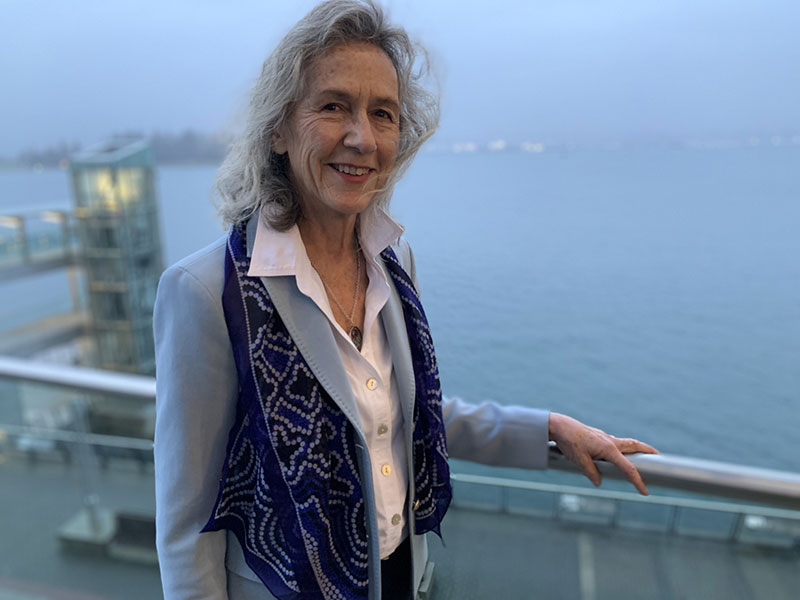
Briefing notes prepared for Fisheries Minister Joyce Murray highlighted her government’s concern over Canadian salmon being netted by Alaskan fisheries.
Rochelle Baker/Canada’s National Observer
Murray’s briefing note advised her to stress Canada is taking steps to address these concerns at bilateral forums with the US, including the Pacific Salmon Commission—a joint forum for the two countries to manage transboundary stocks in accordance with the Pacific Salmon Treaty.
Commission decisions around transboundary salmon stocks covered under the treaty are expected to be consensus-based.
But there was open disagreement between the two countries at the commission’s February meeting over the size, impacts and measures needed on the catch size of Canadian salmon by southeast Alaska fisheries, which start in June.
The unpredictability of the size and timing of the salmon’s return, along with serious population drops, isn’t adequately addressed under the current treaty, Canada alleged.
In particular, Chapter 2 treaty conditions on the timing of southeast Alaskan fisheries mean 79 per cent of Skeena and Nass sockeye caught in waters just north of the BC border aren’t protected by the agreement, which won’t be renegotiated until 2028.
Approximately 800,000 southbound sockeye—the majority headed for BC and, to a lesser extent, Washington and Oregon—were caught in Alaskan fishing districts just north of the border in 2021, according to a report last year by Watershed Watch Salmon Society and SkeenaWild Conservation Trust. That doesn’t include the large numbers of other Canadian salmon stocks, including vulnerable chinook, chum, coho and pink salmon, said Greg Knox, executive director of SkeenaWild.
Most of the interception of Canadian salmon is taking place in Alaska Fishery District 104, outside the panhandle and just north of the BC border, he noted. Approximately 50 to 75 per cent of Skeena sockeye are caught by the District 104 fishery, and between 10 and 50 per cent of Nass salmon, according to the report.
The Skeena River runs are of particular concern, Knox said: “It’s a watershed the size of Switzerland with 300 unique populations of salmon.” What’s more, he said, Alaska doesn’t provide good numbers around how many other types of those salmon, such as steelhead, chum or pink, are being scooped up in Alaskan nets.
In submissions to the commission, Alaska stressed it meets all the conditions of the Pacific Salmon Treaty, adding additional state measures have resulted in fewer fish being caught during the precautionary time periods dictated by the agreement.
Alaskan members also disagreed with Canada’s analysis that salmon runs are returning later, and thus being scooped up outside the protective time frames outlined in the treaty.
The treaty was designed to guarantee Alaskan fisheries targeting pink salmon are not unduly affected by measures to ensure the required numbers of salmon return to Canada, the US said. And the number of Canadian salmon the fleet is catching outside the dictated time frames has not grown over time. “It is our position that the generally low harvest rate by Alaska fisheries is not the reason for the long-term declines in wild Skeena River sockeye salmon,” US commission documents said.
The US also suggested BC and Canadian land-use practices such as logging and mining were also responsible for negative impacts on salmon stocks.
Alaska may be meeting the letter of the law when it comes to the salmon treaty, Knox said, but it is willfully turning a blind eye to its fisheries’ impacts on collapsing Canadian salmon stocks and conservation concerns.
The salmon treaty, devised in 1985, is a fisheries management tool never designed to respond to or meet conservation concerns. “The treaty is basically flawed, and it’s a huge problem,” he said. “It should cover the whole time period that Canadian salmon are transiting Alaskan waters and not just a portion of it.”
As the number of Canada’s salmon stocks shrink, it means the US portion of that catch grows proportionally larger, Knox added.
The US could easily avoid the worst impacts on Canadian salmon by simply shifting District 104 fisheries closer inland, along with the bulk of the fleet targeting Alaskan pink salmon, Knox added.
The Tŝilhqot’in Nation in BC urged the commission to shut down Alaska’s District 104 fishery due to conservation concerns and in respect of Indigenous rights to Fraser River salmon at its January meeting.
Aside from widespread commercial fishery closures, BC First Nations are voluntarily suspending food fisheries while Alaska continues to harvest large numbers of Canadian salmon, Nits’ilʔin (Chief) Joe Alphonse of the Tŝilhqot’in national government said in a press statement.
The Tŝilhqot’in people rely on salmon to feed their families throughout the year, he said, noting for the first time in his life the nation closed its sockeye fishery in 2019 to preserve it. “What we are seeing here is nothing less than economic interests trumping major impacts to the well-being of the Tŝilhqot’in people. Our salmon fishery is central to our identity and our way of life.”
